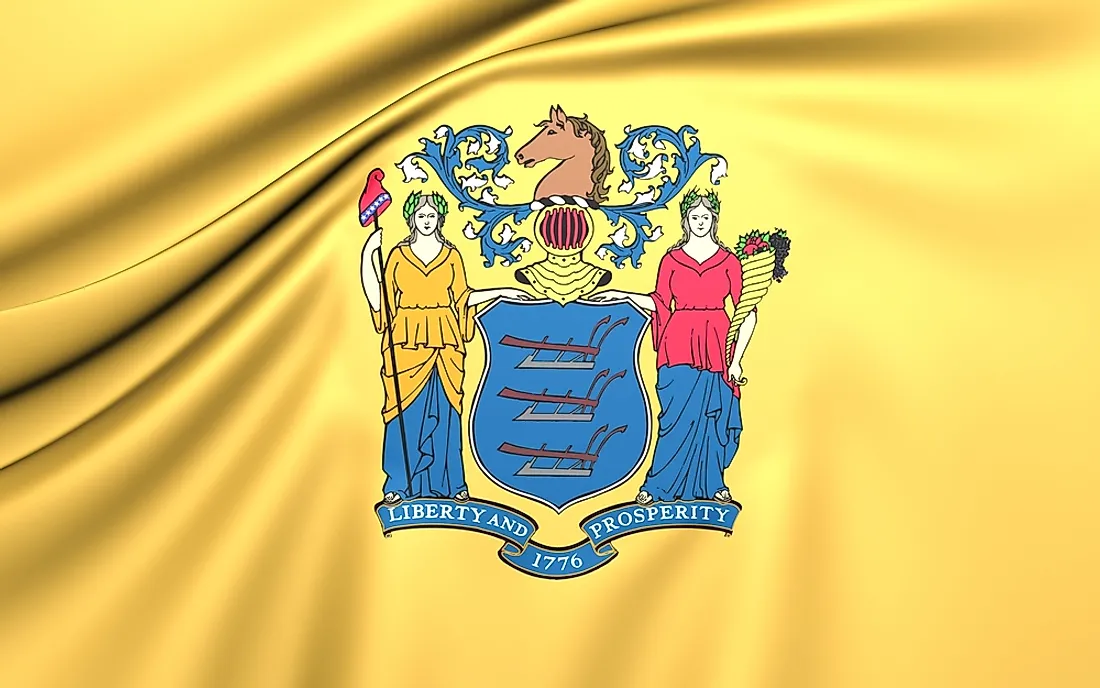New Jersey State Flag

The New Jersey state, also known as the garden state due to agricultural prosperity, has a flag whose color is dominated by light yellow-brown commonly known as buff color. The state seal is displayed in the middle. The seal’s main features are the head of a horse, which is the official state animal and two women; one symbolizing the goddess of farming and the other the goddess of liberty on either side of the seal. Three plows arranged below each other are placed on the shield in the middle of the seal. The flag was officially adopted on January 15, 1896.
Design and Features of the Flag
The seal and coat of arms that is incorporated in the flag was designed by Pierre Eugene Du Simitiere in 1777. The design was approved later in May 1896 while the buff color was approved by the General assembly. The yellow-brown color was common with high ranking soldiers’ uniforms up to the 19th century.
The flag is rectangular measuring two units to three of the width against the length. At the top of the seal is the head of a horse. The horse has always symbolized boldness, strength, stoutness, high galloping speed, and allegiance to the state. The female figures are the goddesses. One goddess has the word liberty below it with a spear on the hand and a cap on the tip of that spear. It is a symbol of independence and freedom. The other female goddess holds a container overflowing with farm products, showing the abundant harvest from the farming exploits of the state. Below the head of the horse is a yellow helmet of a knight's suit, signifying the independence of the government. Inside the shield are three plows which emphasize on the equipment used in the production of food in the farms.
Blue is the conspicuous color on the seal since it signifies resilience, endurance, and loyalty to the state which are the guiding principles of the state. The yellow color, which symbolizes gold, depicts the wealth, brightness, and generosity that accompany prosperity. On the middle of the ribbon is a year “1776” which refers to the year the state acquired independence.
History of the Flag
During the Revolutionary War, the Congress tasked the commander General Washington to adopt a uniform to be worn by the forces. He came up with a dark blue one with some buff patches. The forces were to further identify themselves with a state flag, leading to the adoption of the buff and blue color as the dominant colors of the flag. The blue color was adopted from the Dutch who were once their colonizers. The seal was then incorporated into the flag to make it complete.
Uses of the Flag
The flag should be hoisted whenever the parliament is in session. It should also be raised from sunrise to sunset in all government buildings and educational institutions. Citizens can hoist it in their houses or cars as a sign of allegiance to the state without any aspect of misusing it. It should also be used to identify a New Jersey citizen whenever on duty outside the State.











